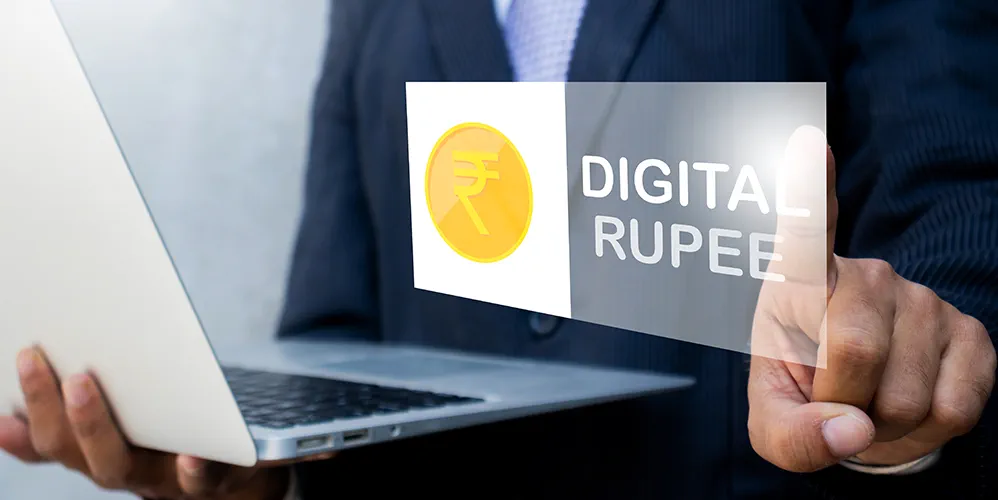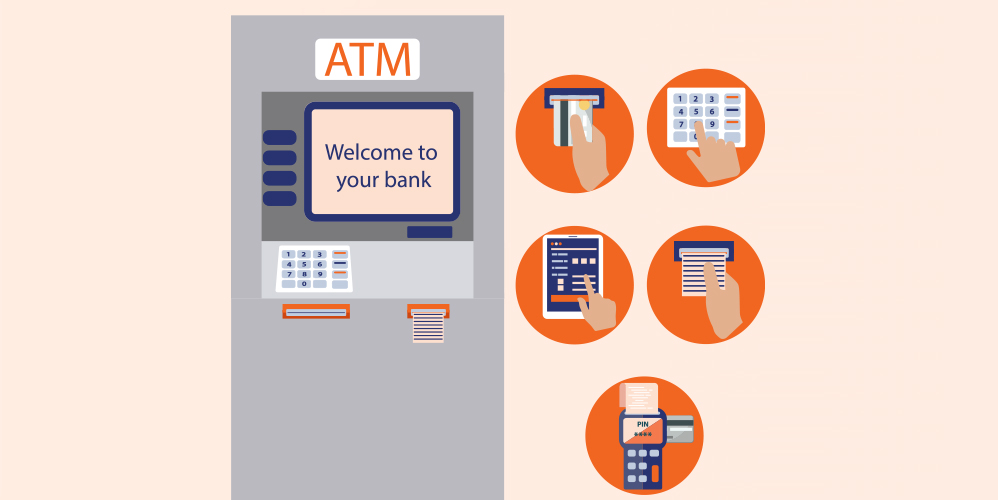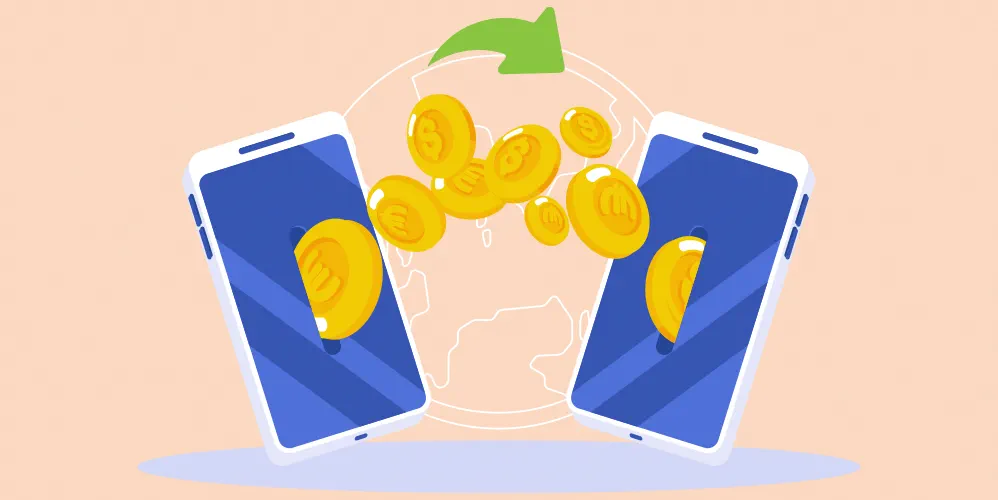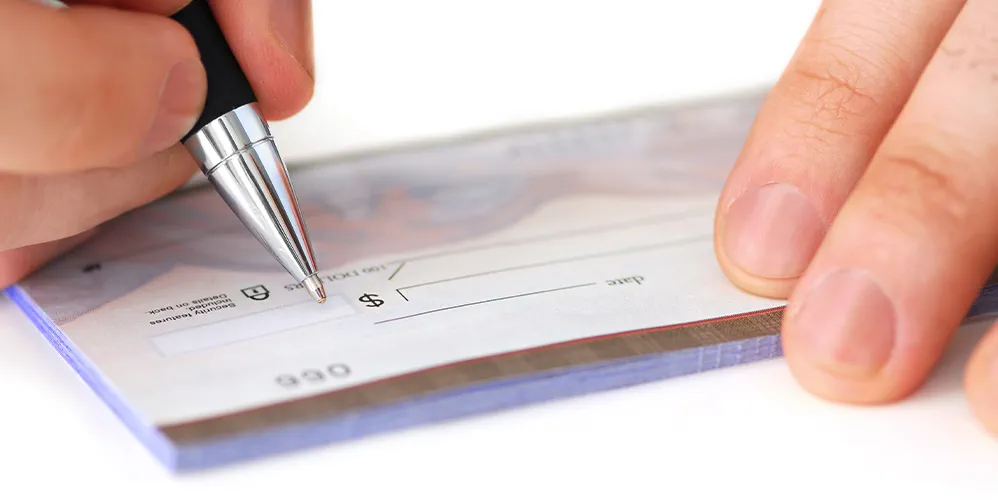
What is Digital Rupee and how does it work
15 Nov 2023

Table of Content
-
What is Digital Rupee?
-
Why is Digital Rupee Introduced?
-
How Does Digital Rupee Work?
-
Types of CBDCs
-
Issuing Digital Rupee
-
Acquiring Digital Rupee
-
How to Load e-Rupee?
-
How to Redeem e-Rupee?
-
Using Digital Rupee
-
Features of Digital Rupee
-
Advantages of Digital Rupee
-
Challenges and Concerns of CBDC
-
CBDC in Bank of Baroda Milestones
-
Conclusion
-
FAQs (FREQUENTLY ASKED QUESTIONS)
CBDCs represent a digital form of a country's national currency, in the case of India, it is Digital Rupee (e₹), issued and regulated by the central bank. It is fundamentally different from cryptocurrencies like Bitcoin, which are decentralized and operate outside the traditional financial system. CBDCs, on the other hand, are fully integrated into the central bank's monetary policy and payment infrastructure.
What is Digital Rupee?
Digital currency refers to any currency that is available in electronic form. The Digital Rupee is virtual money, serving the same purpose as physical money. It is a form of digital currency issued by the Reserve Bank of India (RBI), the country's central bank. The Digital Rupee is a centralized digital currency directly regulated by the RBI, maintaining the stability and trust associated with traditional currencies.
Why is Digital Rupee Introduced?
The Digital Rupee is introduced in India to enhance financial inclusion, providing greater access to formal financial services. It aims to promote efficiency in transactions through faster and more secure digital payment methods, align with the country's technological advancements, foster a digital-first economy, reduce dependence on physical currency, and enable better regulatory control over monetary transactions while countering potential illicit activities.
How Does Digital Rupee Work?
Digital Rupee, also known as eRupee, is electronic money. It operates as a form of digital currency issued and controlled by the Reserve Bank of India (RBI), using blockchain or distributed ledger technology for secure and transparent transactions.
Types of CBDCs
CBDCs can be broadly categorized into two main types:
- Retail CBDCs: Designed for use by the general public for everyday transactions, similar to how cash is used today.
- Wholesale CBDCs: Intended for use by financial institutions for interbank settlements and other wholesale transactions.
Issuing Digital Rupee
The Reserve Bank of India (RBI) issues electronic tokens that can be exchanged on a one-to-one basis, with denominations similar to physical currency. The RBI controls the distribution of the Digital Rupee, distributing it to commercial banks or authorized financial institutions for circulation. Transactions made with Digital Rupee are recorded and verified on a secure ledger system for transparency and security.
Acquiring Digital Rupee
Users can acquire Digital Rupee through digital wallets provided by authorized financial institutions or other approved platforms. These wallets function as secure digital storage for the currency. Digital tokens can also be withdrawn, similar to withdrawing cash, and cash can be converted to eRupee using a UPI gateway.
How to Load e-Rupee?
Users can load the required token amount or select different denominations of Digital Rupee through their linked Banked Account (Bank of Baroda Account) or Other UPI Account. If users have chosen "Other UPI Account," a list of all UPI apps available on their phone will appear. Users can select their preferred UPI app, enter their UPI PIN, and complete the transaction. The amount is debited from the Bank Account directly, and Digital Rupee is loaded in the wallet successfully.
How to Redeem e-Rupee?
Users can redeem/unload wallet tokens to their linked bank account. Digital Rupee Tokens will be unloaded from their wallet, and the equivalent amount will be credited to their linked bank account.
Using Digital Rupee
Person-to-Person: Transfer money to another person’s wallet with a QR code or their mobile number.
Person-to-Merchant: Scan the QR code displayed at a merchant’s establishments (shops) to make a payment.
Features of Digital Rupee
- The Digital Rupee is issued by the Reserve Bank of India and is legally recognized as a secure form of payment accepted by individuals, businesses, and governmental bodies.
- Issuance follows the central bank's financial policies.
- Holders have the freedom to convert Digital Rupee into physical cash through commercial banks.
- Legal Tender: CBDCs are considered legal tender, usable for all types of transactions.
- Central Bank Control: CBDCs are controlled and regulated by the central bank, ensuring stability and trustworthiness.
- Programmable Money: CBDCs can have programmable features, such as smart contracts, enabling automated, self-executing financial agreements.
Advantages of Digital Rupee
- Financial Inclusion: Provides opportunities for those without access to traditional banking services, allowing participation in the formal economy.
- Reduced Transaction Costs: Eliminates intermediaries, leading to lower transaction costs compared to traditional banking systems.
- Efficiency and Speed: Transactions are processed faster, often within seconds, regardless of geographical locations.
- Transparency and Security: Blockchain ledger ensures transaction transparency while maintaining security through cryptographic protocols.
- Government Control and Regulation: Being centrally regulated, the RBI can control the supply, circulation, and monetary policies associated with Digital Rupee.
Challenges and Concerns of CBDC
- Privacy Concerns: The use of CBDCs raises questions about privacy, as transactions can be easily monitored and traced, potentially compromising individual financial privacy.
- Cybersecurity Risks: CBDCs are susceptible to cyber-attacks, requiring robust security measures to protect the digital currency's integrity.
- Disruption of Traditional Banking: Widespread adoption of CBDCs could disrupt traditional banking systems, potentially leading to bank runs and other systemic challenges.
- International Implications: Global adoption of CBDCs may influence the international monetary system, raising concerns about the role of the U.S. dollar as the world's primary reserve currency.
CBDC in Bank of Baroda Milestones
- Bank of Baroda Launched CBDC application called “Bank of Baroda Digital Rupee” on 17th January 2023.
- Bank of Baroda enabled CBDC UPI QR Interoperability functionality for pilot users on the Bank of Baroda Digital Rupee app on September 2, 2023.
Conclusion
The Digital Rupee holds the potential to revolutionize India's financial landscape, promoting financial inclusion, reducing transaction costs, and streamlining financial operations. As the digital currency ecosystem evolves, the Digital Rupee is positioned to play a pivotal role in shaping the future of transactions and financial services in India.
The Digital Rupee is a landmark development in India's financial history, leveraging technology to create a more inclusive and efficient financial system. As it continues to evolve, it stands to make a significant impact, not just within the country, but also potentially on a global scale, setting a precedent for other nations to explore and adopt their own digital currencies.
FAQs (FREQUENTLY ASKED QUESTIONS)
- How e₹ is different from UPI or other fund transfer mode (NEFT/RTGS/IMPS)?
- Is e₹ same as cryptocurrency such as bitcoin?
e₹ is a form of money, a digital representation of physical currency, whereas UPI or other fund transfer modes are forms of payment. Therefore, usage of e₹ is not limited to payments. e₹ also serves the purpose of ‘unit of account’ and importantly, ‘store of value’ as it represents a claim on the Reserve Bank’s balance sheet.
No. e₹ is a digital form of currency notes unlike other cryptocurrencies such as bitcoin. e₹ has intrinsic value and is regulated by the RBI.
Popular Articles
Tag Clouds
Related Articles


The Importance of Pension Funds: Secure Your Future with Steady Retirement Income








-
Disclaimer
The contents of this article/infographic/picture/video are meant solely for information purposes and do not necessarily reflect the views of Bank of Baroda. The contents are generic in nature and for informational purposes only. It is not a substitute for specific advice in your own circumstances. Bank of Baroda and/ or its Affiliates and its subsidiaries make no representation as to the accuracy; completeness or reliability of any information contained herein or otherwise provided and hereby disclaim any liability with regard to the same. The information is subject to updation, completion, revision, verification and amendment and the same may change materially. The information is not intended for distribution or use by any person in any jurisdiction where such distribution or use would be contrary to law or regulation or would subject Bank of Baroda or its affiliates to any licensing or registration requirements. Bank of Baroda shall not be responsible for any direct/indirect loss or liability incurred by the reader for taking any financial decisions based on the contents and information mentioned. Please consult your financial advisor before making any financial decision.
How to Withdraw Cash from Your Credit Card at an ATM: Step-by-Step Instructions
Learn how to withdraw money from your credit card at an ATM with Bank of Baroda. Our step-by-step guide will walk you through fees, the process, withdrawal limits, card PINs & more to ensure a successful transaction
Easy as 1-2-3: How to Deposit Cash Through an ATM
Learn how to securely deposit cash at an ATM with Bank of Baroda. Follow our step-by-step guide to ensure a hassle-free experience. Start today and safely deposit your money through an ATM.


Leave a Comment
Thanks for submitting your details.